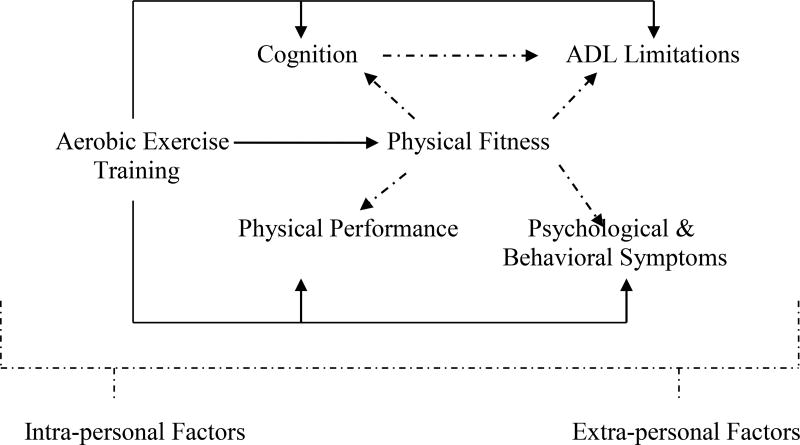Figure 2.
Implications for Future Research Based on the FIT-AD Model. a) Investigate the effect of aerobic exercise training on all other five constructs by exploring, quantifying, and operationalizing different components of each construct; b) Examine the dose-response relationships between aerobic exercise training dose and all five other constructs; c) Investigate the mediating/moderating effects of physical fitness on physical performance, cognition, ADL limitations, and psychological & behavioral symptoms from aerobic exercise training; d) Study the mediating/moderating effects of cognition on ADL limitations from aerobic exercise training since cognition explains 25%–50% of ADL variance; e) Evaluate the effects of individualized aerobic exercise training based on inter- and extra-personal factors on all other five constructs; and f) Identify the individuals who are most likely to benefit from aerobic exercise training based on the mediating/moderating effects of inter- and extra-personal factors on all six constructs.

